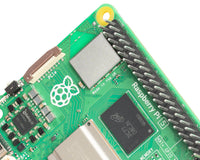
News about Astro Pi, a review of the Micro Dot pHAT and a system for good behaviour - the Raspberry Pi Roundup!
The Big News: Astro Pi

The Raspberry Pi Foundation has announced that children from all over Europe now have the chance to have their code projects run on the International Space Station. Astronaut Thomas Pesquet will be in charge of the new mission which will see him fly up to the ISS and activate the code. The new competition is open to teams with children aged 16 and under from all ESA member states.
This is how your team can take part:
- Assemble your mission team, which must include at least one support teacher as well as students under the age of 16.
- Use the Mission Plan Template to design a sample mission that showcases your approach to running a space mission, and demonstrates that you can break down your big idea into specific steps. Note that you don’t need to address the challenge at this stage. Submit your mission plan and register your participation.
- If you’re picked to continue to the next phase, you will receive an Astro Pi kit and a mission challenge designed by Thomas Pesquet to test your team’s ingenuity and skills.
- If your solutions are picked, then your code will be beamed up to the ISS, installed on the Astro Pi units, and run by Thomas Pesquet.
You have until 1st November to submit your team’s project.
For more information, including how to submit your project, please visit the Raspberry Pi website.
Micro Dot pHAT
In this month’s issue of The MagPi (the 50th), Phil King reviews Pimoroni’s Micro Dot pHAT. This little board features 6 micro-LED matrices that can be programmed independently. Read the review here. The pHAT is available from The Pi Hut!
Good behavior

Stuart Harrison has a young son whose school awards (good behaviour) reward points and (bad) behaviour points. Frustrated with the school’s interface, Stuart set-up a screen scraper to get the data off their system and put it onto his own system. After a while, he realised that their method of points was flawed, at least in regards to how it awarded them with respect to his son. So, he decided to build his own reward system using a couple of Amazon Dash buttons and a Raspberry Pi 3. Programmed with a combination of Ruby and Node, the system runs on a 5″ display with the Dash buttons alongside which add points on. Ingenious, and highly effective according to Stuart. You can read about how he did it, and see the code, over on his blog.





